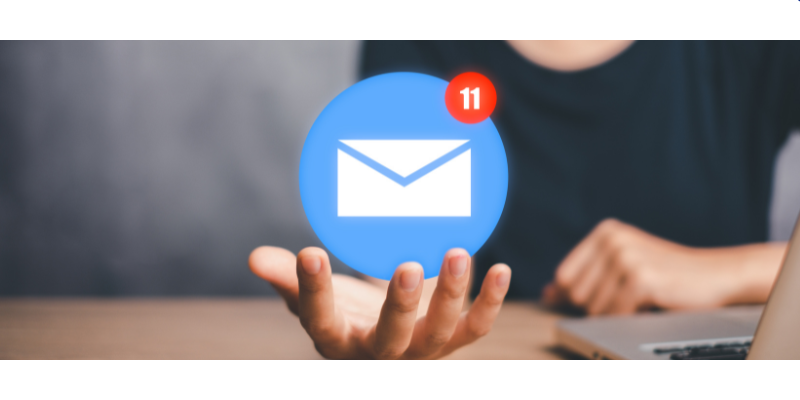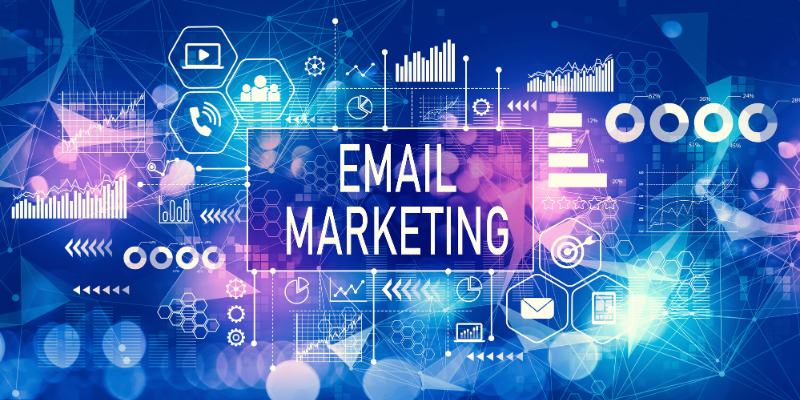Table of Contents
ToggleMastering Email marketing can significantly enhance your online presence and drive business growth.
Sending emails for promotions and sales has proven invaluable for SEO agencies, SaaS companies, and service providers in general.
However, successful email campaigns don’t happen by chance.
Many businesses fall into common traps that hinder their marketing effectiveness.
Avoiding these pitfalls is crucial for building a robust email marketing strategy that resonates with your audience and boosts conversions.
This post will delve into the common mistakes in email marketing and provide actionable insights to help you navigate these challenges successfully.
Ignoring Audience Segmentation
A few tips about segmentation:
- Avoid sending the same email to multiple groups of recipients
- Divide your list into the smallest group of recipients possible
- Speak directly to each group of recipients
Mastering Email marketing is impossible if you don’t master list segmentation first.
Ignoring audience segmentation can severely undermine your email marketing efforts.
When you send the same generic email to your entire list, it’s unlikely to resonate with every recipient.
This one-size-fits-all approach can lead to disinterest, lower engagement rates, and ultimately, increased unsubscribes.

Segmentation involves dividing your email list into smaller groups based on criteria like demographics, purchase behavior, and engagement history.
By doing this, you can create more relevant and personalized content for each segment, increasing the likelihood that recipients will find value in your emails.
For instance, you could send a special offer to loyal customers, a welcome series to new subscribers, and a re-engagement campaign to inactive users.
Each segment receives tailored content that speaks directly to their needs and interests, enhancing their overall experience with your brand and driving better results for your campaigns.
Mastering Email Marketing: Mobile Optimization
Optimizing your emails for mobile viewing is essential.
A significant number of users open their emails on smartphones and tablets, and a poorly formatted email can quickly lead to disengagement.
Ensure your email design is responsive, meaning it adapts seamlessly to different screen sizes and orientations.
Pay attention to font sizes, image scaling, and button placements to ensure all elements are easily readable and clickable on smaller screens.
Additionally, keep subject lines concise and preheader text informative to maximize their visibility on mobile devices.
Neglecting mobile optimization can result in a frustrating user experience, causing potential customers to lose interest and disengage from your brand.
By prioritizing mobile-friendly designs, you not only enhance user experience but also improve the overall performance of your email marketing campaigns.
Overlooking Personalization Opportunities
Personalization is more than just addressing your recipient by their first name; it’s about creating a meaningful connection through tailored content.
Take advantage of data such as past interactions, browsing behaviors, and purchase history to craft emails that resonate on a personal level.
For example, if a customer frequently browses a particular category on your website, send them recommendations or special offers related to those interests.

Celebrating milestones, like birthdays or anniversaries with your brand, by sending exclusive discounts or personalized messages can also deepen customer loyalty.
Leveraging dynamic content blocks that change based on user data can make each email feel uniquely crafted for the recipient, enhancing engagement and conversion rates.
Personalization demonstrates that you understand and value your customers, making them more likely to interact with your content and take the desired actions.
Ignoring Email Deliverability Issues
Ignoring deliverability issues can significantly undermine your email marketing efforts, regardless of how compelling your content is.
If your emails aren’t reaching the inbox, your audience will never have the chance to engage with them.
One major factor affecting deliverability is the use of spammy subject lines that trigger spam filters.
Words like “free,” “discount,” or excessive use of exclamation marks can raise red flags.
Another crucial aspect is sending emails from unverified domains, which can cause email service providers to mark your emails as suspicious.
Ensure your domain is authenticated using SPF, DKIM, and DMARC protocols to enhance your sender reputation.
Moreover, neglecting to maintain a clean email list can severely impact your deliverability.
Inactive subscribers and bounced emails contribute to a poor sender score, making it more likely that future emails will land in the spam folder.
Regularly scrub your list to remove inactive users and focus on engaging with those who are genuinely interested.
Implement a double opt-in process to confirm that new subscribers genuinely want to receive your emails, which can further improve your deliverability.
Additionally, pay attention to your email content and avoid using too many images or large attachments, as these can trigger spam filters.
Stick to a balanced text-to-image ratio and ensure your emails are easy to load.
By addressing these deliverability concerns, you can significantly improve the chances of your emails reaching your audience’s inbox, thereby enhancing the effectiveness of your email marketing campaigns.
Failing to Provide Clear Calls to Action
A clear and compelling call to action (CTA) is the backbone of any effective email.
Without a well-defined CTA, your recipients might not know what step to take next, leaving your email without a purpose.
Your CTA should stand out visually and be easy to understand at a glance.
Use action-oriented language that drives urgency and aligns with your email’s goal, whether it’s “Shop Now,” “Download Your Free Guide,” or “Register for the Webinar.”
The placement of your CTA is also crucial—ensure it’s above the fold where it’s immediately visible and repeat it at the end if the email is lengthy.
Additionally, make sure your CTA is supported by concise, benefit-driven copy that communicates what the recipient will gain by taking the desired action.
For example, instead of a generic “Click Here,” a more compelling CTA would be “Get 20% Off Your First Order.”
Also, consider using buttons rather than text links for your CTAs, as buttons are more visually appealing and easier to tap on mobile devices.
To further enhance effectiveness, test different variations of your CTAs to see what resonates best with your audience.
This could involve experimenting with different wording, colors, or placements to optimize engagement.
By providing a clear and compelling path for your readers to follow, you significantly increase the chances of achieving your email marketing goals.
Not Testing Your Emails Before Sending
Not testing your emails before sending them out can lead to a host of issues that undermine your email marketing efforts.
Imagine spending hours crafting the perfect email, only to have it display incorrectly on your recipients’ devices or end up riddled with typos and broken links.
Testing is a crucial step to ensure that your email looks and functions as intended across various email clients and devices.
This means verifying that all links work, images load properly, and the layout appears as designed, whether viewed on a desktop, tablet, or smartphone.
Moreover, testing involves more than just checking for technical issues; it also includes evaluating different elements of your email to see what performs best with your audience.
Conduct A/B tests on key components such as subject lines, headlines, and call-to-action buttons.
For instance, you might test two different subject lines to see which one yields a higher open rate or experiment with different send times to determine when your audience is most engaged.
These tests provide invaluable data that can inform your future email marketing strategies, making them more effective and targeted.
By thoroughly testing your emails before hitting the send button, you can avoid embarrassing mistakes and ensure that your campaigns achieve their maximum potential.
Overloading Emails with Too Much Information
Mastering Email marketing starts with knowing how much information is just too much.
Bombarding your audience with excessive information can be counterproductive.
The key to effective email marketing lies in delivering concise and targeted messages that captivate and compel action.
Instead of cramming every detail about your products or services into a single email, focus on the essentials that will pique interest and drive engagement.
Utilize bullet points, images, and ample whitespace to break up text and make your email more digestible.
This approach not only enhances readability but also highlights the most critical points you want to convey.
Consider the primary goal of your email and tailor your content accordingly.
Whether you aim to inform, promote, or engage, each email should have a clear and singular focus.
Avoid the temptation to include multiple calls to action that can confuse or overwhelm your readers.
Instead, guide them towards a single, well-defined action that aligns with your campaign objectives.
By streamlining your content and maintaining a laser focus on what truly matters, you make it easier for your audience to absorb the information and take the next step.
This targeted approach can significantly improve the effectiveness of your email marketing efforts, ensuring that your message resonates and prompts the desired response.

Mastering Email Marketing: The Importance of Timing and Frequency
Understanding the importance of timing and frequency can significantly impact the success of your email marketing campaigns.
Sending emails at times when your audience is less likely to engage can result in low open rates and diminished effectiveness.
Similarly, bombarding your subscribers with too many emails can lead to email fatigue, causing them to unsubscribe or ignore future communications.
To find the optimal timing, analyze data from past campaigns to identify patterns in engagement.
Consider the time zones of your audience and when they are most likely to check their inbox.
Tools that offer send-time optimization can help you schedule emails at the best times for maximum impact.
When it comes to frequency, there is no one-size-fits-all approach. The right cadence depends on your audience’s preferences and the nature of your content.
Regularly survey your subscribers or analyze engagement metrics to find a balance that keeps your audience informed but not overwhelmed.
For instance, a weekly newsletter might work for some businesses, while others might benefit from bi-weekly or monthly updates.
The key is to remain consistent without becoming intrusive.
By carefully considering both timing and frequency, you can enhance the overall effectiveness of your email marketing efforts, fostering a more engaged and responsive audience.
Failing to Analyze and Adjust Campaign Performance
Without consistently analyzing and adjusting your email campaign performance, you risk missing out on critical opportunities for improvement.
Metrics such as open rates, click-through rates, and conversion rates provide a wealth of data that can inform your strategy.
For example, if you notice a particular email had a high open rate but low click-through rate, it may indicate that your subject line was compelling, but the email content or CTA didn’t resonate.
Conversely, a low open rate might signal that your subject line needs work.
Utilize tools that offer comprehensive analytics to track these key performance indicators (KPIs).
Beyond just looking at numbers, delve into the behaviors driving these metrics. Segmenting your data can reveal how different audience groups respond, helping you tailor future emails more effectively.
Additionally, consider conducting A/B tests to fine-tune various elements of your emails, such as headlines, images, and CTAs.
These tests can provide actionable insights, showing what works best with your audience.
Implement feedback loops where you review the performance of each campaign and adjust your strategy accordingly.
This ongoing process ensures that your email marketing remains dynamic and aligned with your audience’s preferences, thereby enhancing the effectiveness of your campaigns.
Not Complying with Legal and Ethical Standards
Navigating the legal and ethical landscape is essential in mastering Email marketing and to maintain your brand’s integrity and avoid costly penalties.
Regulations like the CAN-SPAM Act and GDPR mandate that businesses must secure explicit consent from individuals before sending marketing emails.
Additionally, these laws require that every email contains a clear and accessible unsubscribe link, giving recipients the freedom to opt-out at any time.
Failing to comply can not only result in severe fines but also tarnish your brand’s reputation.
Beyond legal requirements, ethical considerations play a crucial role in building trust with your audience.
Respect user data by implementing robust security measures to protect it from breaches.
Transparently communicate how you will use their information and honor their preferences and privacy.
By adhering to both legal and ethical standards, you foster a trustworthy relationship with your subscribers, ultimately enhancing effectiveness and longevity, the pillars of mastering email marketing.

